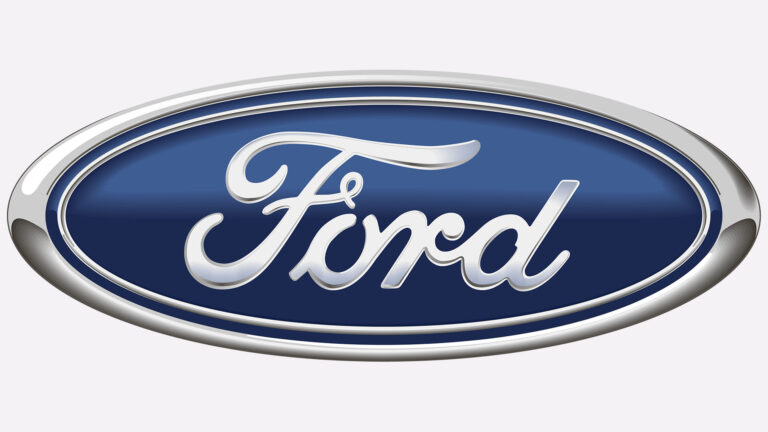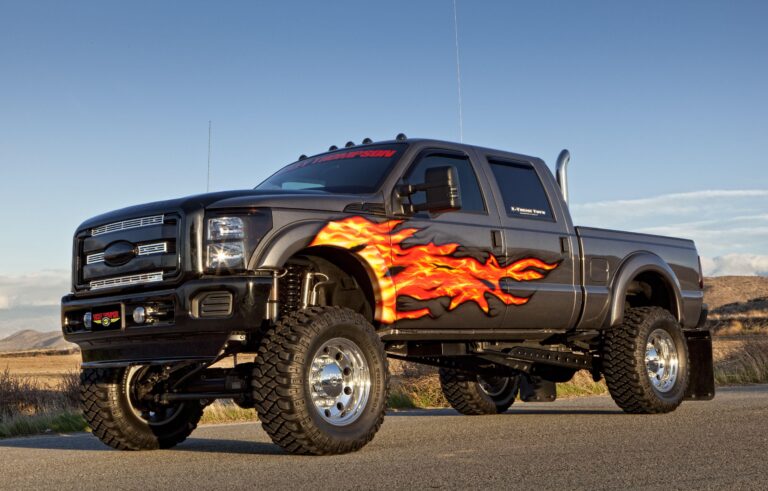90s Ford Trucks For Sale Near Me: Your Comprehensive Guide to Finding a Classic Workhorse
90s Ford Trucks For Sale Near Me: Your Comprehensive Guide to Finding a Classic Workhorse cars.truckstrend.com
The allure of 90s Ford trucks remains as strong as ever, drawing in enthusiasts, practical users, and those seeking a reliable, character-filled vehicle without the complexities and price tag of modern counterparts. From the iconic F-Series to the agile Ranger and the legendary Bronco, these vehicles represent an era of robust design, straightforward mechanics, and a "Built Ford Tough" ethos that truly delivered. If you’ve found yourself searching "90s Ford Trucks For Sale Near Me," you’re not alone. This guide will walk you through everything you need to know about finding, evaluating, and purchasing one of these enduring American legends right in your local area.
Why the 90s Ford Truck Appeal Endures
90s Ford Trucks For Sale Near Me: Your Comprehensive Guide to Finding a Classic Workhorse
The decade of the 1990s was a golden age for Ford trucks, producing vehicles that struck a perfect balance between utility, durability, and classic styling. Their enduring popularity isn’t just nostalgia; it’s rooted in several tangible advantages:
- Durability and Reliability: Built with heavy-gauge steel frames and tried-and-true powertrains, these trucks were designed to work and last. Engines like the venerable 4.9L inline-six, the robust 5.0L and 5.8L V8s, and especially the legendary 7.3L Power Stroke diesel, are known for racking up hundreds of thousands of miles with proper maintenance.
- Simplicity and Maintainability: Compared to today’s computer-laden vehicles, 90s Fords are refreshingly simple. Less complex electronics mean fewer potential failure points and often easier, more affordable DIY repairs for the mechanically inclined. Parts are also widely available and generally inexpensive.
- Classic Aesthetics: The "Old Body Style" (OBS) F-Series (1992-1996/97) and the boxy Ranger models have a timeless appeal. Their no-nonsense, rugged looks stand out in a sea of modern, aerodynamic designs.
- Versatility: Whether you need a work truck for the farm, a reliable daily driver, a capable off-roader, or a canvas for a custom build, a 90s Ford truck can fill the role with ease. Their towing and hauling capacities are still respectable by today’s standards.
- Value Proposition: These trucks offer incredible bang for your buck. You can acquire a capable and dependable vehicle for a fraction of the cost of a new one, and if well-maintained, they tend to hold their value remarkably well.

Key Models of the 90s Ford Era
Understanding the different models and their characteristics is crucial when beginning your search. Each offers a unique set of capabilities and appeals:
Ford F-Series (F-150, F-250, F-350)
The backbone of Ford’s truck lineup, the F-Series dominated the market throughout the 90s.
- Ninth Generation (1992-1996 F-150, 1992-1997 F-250/F-350): The "OBS" (Old Body Style)
- Engines: This is where the legends live. Gasoline options included the famously indestructible 4.9L (300 cu in) inline-six, and the 5.0L (302 cu in) and 5.8L (351 cu in) Windsor V8s. For heavy-duty models (F-250/F-350), the naturally aspirated 7.3L IDI (Indirect Injection) diesel was available until mid-1994, when it was replaced by the iconic 7.3L Power Stroke Turbo Diesel. The Power Stroke is highly sought after for its immense torque, reliability, and potential for power upgrades, making F-250/F-350 Power Strokes from this era particularly valuable.
- Appeal: Known for their robust construction, classic square-body styling with updated aerodynamics, and a loyal following. These trucks are true workhorses and highly customizable.
- Tenth Generation (1997-1999 F-150, 1997-1999 F-250 Light Duty): The "Aerodynamic" F-150
- Engines: Ford introduced its new "Modular" engine family with this generation: the 4.2L Essex V6, 4.6L Triton V8, and 5.4L Triton V8. The F-250 Light Duty was essentially a heavier-duty F-150, sharing its body style and engines, before the Super Duty line debuted in 1999.
- Appeal: A significant departure in styling, offering a more car-like ride and improved aerodynamics. While not as ruggedly iconic as the OBS, these are still dependable trucks, often available at a more accessible price point.
Ford Ranger
Ford’s compact pickup offered a versatile and economical alternative to the full-size F-Series.
- Year Range: 1990-1999 (fourth generation from 1993 onwards saw a significant refresh).
- Engines: Common engines included the 2.3L four-cylinder (known for fuel economy), the 3.0L Vulcan V6, and the more powerful 4.0L Cologne V6.
- Appeal: Ideal for lighter hauling, city driving, and off-road adventures. Rangers are nimble, easy to park, and highly fuel-efficient compared to their larger siblings. They have a strong following for their simplicity and affordability.
Ford Bronco
The full-size SUV based on the F-Series chassis, the Bronco offered a unique blend of utility and passenger comfort with its removable hardtop.
- Year Range: 1990-1996 (the last years of its fifth generation).
- Engines: Typically powered by the 5.0L (302) or 5.8L (351) Windsor V8s.
- Appeal: An iconic vehicle, especially after its discontinuation in 1996 (until its recent revival). 90s Broncos are sought after by collectors and off-road enthusiasts alike for their classic looks, V8 power, and solid axle front suspension (until 1992).
Where to Find 90s Ford Trucks For Sale Near You
The "Near Me" part of your search is crucial. Here are the best places to look:
- Online Marketplaces with Local Filters:
- Craigslist: Still a go-to for private party sales. Use location filters to narrow down results to your area. Be prepared for varying levels of detail in listings.
- Facebook Marketplace: Increasingly popular for local sales. Join specific groups like "OBS Ford Trucks For Sale" or "90s Ford Ranger Owners" for potentially better finds from enthusiasts.
- eBay Motors: While many listings are national, you can filter by distance from your zip code. Excellent for a wider variety of vehicles, from projects to fully restored.
- AutoTrader Classics / Hemmings: More geared towards classic and collector vehicles, these sites might feature higher-end or fully restored 90s Fords.
- Local Car Sales Websites: Check regional classified sites or apps specific to your state or metropolitan area.
- Local Dealerships (Used Car Lots): While less common for older vehicles, smaller independent used car dealerships sometimes have well-maintained 90s trucks that were traded in.
- Auctions:
- Public Auto Auctions: Often where dealerships offload older trade-ins. You can find good deals, but "as-is" sales mean high risk.
- Government Surplus Auctions: Municipalities, state agencies, and utility companies often sell off their fleet vehicles (which can include well-maintained work trucks) at auction.
- Word of Mouth & Local Classifieds: Don’t underestimate the power of community. Check local newspaper classifieds, community bulletin boards, and simply tell friends and family you’re looking. You might find a gem from someone looking to sell locally.
- Specialized Forums & Enthusiast Groups: Online forums for OBS Ford trucks, Ranger forums, or Bronco clubs often have dedicated "For Sale" sections. These are excellent places to find trucks that have been cared for by enthusiasts who understand their value.
The Buying Process: A Step-by-Step Guide
Finding a 90s Ford truck "near me" is just the first step. The buying process requires diligence and a methodical approach.
-
Define Your Needs and Budget:
- Purpose: Will it be a daily driver, work truck, off-roader, or project?
- Model/Engine: Which F-Series, Ranger, or Bronco, and what engine best suits your needs?
- Budget: Be realistic. Factor in not just the purchase price, but also potential immediate repairs, insurance, registration, and ongoing maintenance.
-
Initial Contact and Questions:
- Before driving to see a truck, call or message the seller. Ask about:
- Mileage (though less critical than condition for these older trucks).
- Maintenance history (receipts are a huge plus).
- Rust (where is it, how bad?).
- Any major mechanical issues or recent repairs.
- Accident history.
- Why they are selling.
- Title status (clean, salvage, etc.).
- Before driving to see a truck, call or message the seller. Ask about:
-
In-Person Inspection (Crucial!):
- Rust: This is the #1 enemy. Check common spots: cab corners, rocker panels, wheel wells, bed supports, frame rails (especially near leaf spring mounts and crossmembers), and under the battery tray. Bring a small hammer to gently tap areas to check for rot behind paint.
- Engine: Look for leaks (oil, coolant, power steering). Listen for strange noises (knocks, taps, squeals). Check fluid levels and condition. For diesel, observe cold start and exhaust smoke.
- Transmission: Check fluid color and smell. During the test drive, ensure smooth shifts, no slipping, and proper engagement of all gears (including reverse). Test 4×4 if equipped.
- Suspension & Steering: Look for worn bushings, leaky shocks, and excessive play in the steering wheel. For F-Series with Twin I-Beam, check ball joints and radius arm bushings.
- Brakes & Tires: Check pad/rotor wear, tire tread depth, and uneven wear patterns.
- Interior: Check for functionality of all lights, gauges, HVAC, power windows/locks, and the condition of seats, dashboard, and headliner.
- Underbody: Look for damage from off-roading, bent components, or patched areas.
-
Test Drive:
- Drive on varying roads (city, highway).
- Listen for noises (driveline clunks, suspension creaks, engine sounds).
- Test brakes firmly and smoothly.
- Check steering for vagueness or pulling.
- Pay attention to how the transmission shifts.
-
Pre-Purchase Inspection (PPI):
- Highly Recommended. If you’re serious about a truck, especially one with higher mileage or a higher price tag, pay a trusted independent mechanic to perform a PPI. They can identify issues you might miss and give you an objective assessment of the truck’s true condition. This small investment can save you thousands later.
-
Negotiation:
- Be prepared to negotiate based on your inspection findings and the market value. Have comparable listings handy. Be polite but firm. Don’t be afraid to walk away if the price isn’t right or if too many red flags appear.
-
Paperwork and Title Transfer:
- Ensure the VIN on the title matches the truck.
- Verify the seller is the legal owner.
- Complete the title transfer correctly according to your state’s DMV requirements.
Important Considerations Before You Buy
- Rust is a Dealbreaker (or a Major Project): Surface rust can be managed, but structural rust on the frame, cab mounts, or critical suspension points is a safety hazard and an expensive repair. Know what you’re getting into.
- Maintenance History is Gold: A truck with a thick folder of service records is almost always a better buy than one with no history, even if it has higher mileage. It indicates care.
- Common Issues by Model/Engine: Research specific quirks. For example:
- 7.3L Power Stroke: Check for oil leaks (especially around the HPOP and valve covers), cam position sensor issues, exhaust backpressure valve (EBPV) problems, and injector wear.
- Modular V8s (10th Gen F-150): Early versions could have spark plug ejection issues or intake manifold gasket leaks.
- E4OD/4R100 Transmissions: Known for being sensitive to fluid changes and temperature. Check for harsh shifts or slipping.
- Twin I-Beam Suspension (OBS F-Series): Can wear out tires if not aligned properly due to worn bushings or ball joints.
- Parts Availability: Generally, parts for F-Series trucks are abundant, both new aftermarket and used. Ranger parts are also relatively easy to find. Bronco-specific body parts can be trickier but are still available.
- Emissions Testing: Check your local and state emissions requirements. Older trucks may be exempt, but others may require specific components to pass.
- Previous Modifications: Be wary of poorly executed modifications (lift kits, engine tunes, exhaust systems). Quality matters, and bad mods can lead to significant problems.
Tips for a Successful Purchase
- Be Patient: The right truck won’t always appear overnight. Don’t rush into a purchase.
- Set Realistic Expectations: You’re buying a 25-35 year old truck. It will have quirks, wear, and likely some deferred maintenance.
- Bring a Friend: An extra set of eyes can spot things you miss and provide a sounding board.
- Ask for More: Don’t hesitate to ask for more detailed photos, a video of a cold start, or a video of the truck running.
- Verify the VIN: Use online VIN decoders to confirm the year, make, model, and engine, and run a CarFax or AutoCheck report if available (though these reports may be limited for older vehicles).
Price Guide: 90s Ford Trucks For Sale Near Me
Prices for 90s Ford trucks vary wildly based on condition, mileage, specific model, engine, and geographical location. The table below provides general price ranges to help set your expectations.
| Model & Key Engine Options | Typical Year Range | Condition: Rough/Project | Condition: Good Driver | Condition: Excellent/Restored |
|---|---|---|---|---|
| Ford F-150 (OBS) | 1992-1996 | $1,500 – $4,000 | $5,000 – $12,000 | $15,000 – $30,000+ |
| (4.9L I6, 5.0L V8, 5.8L V8) | ||||
| Ford F-250/F-350 (OBS) | 1992-1997 | $2,500 – $6,000 | $7,000 – $18,000 | $20,000 – $45,000+ |
| (Incl. 7.3L Power Stroke) | ||||
| Ford F-150 (10th Gen) | 1997-1999 | $1,000 – $3,000 | $4,000 – $9,000 | $10,000 – $20,000+ |
| (V6, Modular V8s) | ||||
| Ford Ranger | 1990-1999 | $800 – $2,500 | $3,000 – $7,000 | $8,000 – $15,000+ |
| (I4, V6 options) | ||||
| Ford Bronco | 1990-1996 | $3,000 – $8,000 | $10,000 – $25,000 | $30,000 – $60,000+ |
| (5.0L V8, 5.8L V8) |
Disclaimer: These are estimated price ranges and can fluctuate significantly based on factors such as: specific engine/transmission, 2WD/4WD, trim level, mileage, rust levels, maintenance history, modifications, and regional market demand. A rare, low-mileage, impeccably maintained example will command a premium.
Frequently Asked Questions (FAQ)
Q1: What is the most reliable 90s Ford truck engine?
A1: For gasoline, the 4.9L (300 cu in) inline-six is legendary for its durability and simplicity. For diesel, the 7.3L Power Stroke is widely considered one of the most reliable diesel engines ever produced, capable of massive mileage.
Q2: Are 90s Ford trucks good for daily driving?
A2: Absolutely, many 90s Ford trucks, especially well-maintained F-150s and Rangers, make excellent daily drivers. They offer robust utility without the excessive size or complex electronics of modern trucks. However, fuel economy will be lower than newer vehicles.
Q3: What are the most common rust spots on 90s Ford trucks?
A3: Key areas to check for rust include: cab corners, rocker panels, wheel arches, the bed floor and supports, frame rails (especially near the rear axle), and around the windshield and rear window seals.
Q4: Can I still get parts for 90s Ford trucks easily?
A4: Yes, generally. Due to their popularity and long production runs, aftermarket parts are readily available for most components. OEM parts can be found from Ford dealerships or online, and used parts are abundant at salvage yards.
Q5: What does "OBS" mean when referring to a Ford truck?
A5: "OBS" stands for "Old Body Style." It typically refers to the ninth-generation Ford F-Series trucks produced from 1992-1996 (F-150) and 1992-1997 (F-250/F-350), which retained a classic, boxier silhouette with updated styling cues.
Q6: Should I get a pre-purchase inspection (PPI) for a 90s Ford truck?
A6: Yes, a PPI is highly recommended, especially for vehicles over 20 years old. A trusted mechanic can identify underlying issues, structural rust, and potential future problems that might not be obvious to an untrained eye, saving you money and headaches down the road.
Q7: How much should I expect to pay for insurance on a 90s Ford truck?
A7: Insurance costs vary widely based on your location, driving record, and the specific model. Generally, older trucks tend to have lower insurance premiums due to lower replacement costs, but it’s always best to get a quote from your insurance provider before purchasing.
Conclusion
The quest for "90s Ford Trucks For Sale Near Me" is a journey into an era of automotive ruggedness and simplicity. These trucks aren’t just vehicles; they’re a statement, a testament to enduring design and the "Built Ford Tough" legacy. By understanding the different models, knowing where to search, and diligently following a thorough inspection and buying process, you significantly increase your chances of finding a true gem. A well-chosen 90s Ford truck offers reliability, character, and versatility that can stand the test of time, proving to be a rewarding investment for years to come. Happy hunting!




